14 TOP Nature Parks and Attractions in Singapore (guide to cost, transport, and activities)
I love showing visitors the nature attractions of Singapore. The harmony with nature that can be found in Singapore really makes it unique amongst its south-east Asian peers, and offers a calming escape from the busy hustle and bustle. They’ve also gone a long way to cultivate the beauty of nature, including plants and wildlife.
I put together this guide to help visitors to Singapore figure out some ideas of the nature they can explore while they’re here, and to plan a budget for how much it costs to visit.
In this guide I’ve included:
- Directions to get to the nature park/attraction
- Costs involved based on typical spend for visitors to Singapore
- Ideas of what you can do at each location
1. East Coast Park
Stretching along Singapore’s east cost is the aptly named East Coast Park. It’s home to long stretches of greenery punctuated by shops, picnic spots, and great views. I like bringing visitors to East Coast Park for the:
- Hawker centre - East Coast Lagoon has some fantastic satay and Hokkien mee
- Bedok Jetty - a nice view from a very long jetty that stretches out off the coast (bring sunscreen and a hat)
- Cycling - from S$10 per hour, cycling is my preferred approach to exploring the park
Bicycles are available to hire at a few locations throughout the park, including at Changi Airport. Hires start from S$10 per hour, though I usually recommend spending S$15 per hour for a more comfortable bike. Tandem, group, and children’s bikes are available. As are one-way hires that allow you to rent at one shop and return at another inside the park.
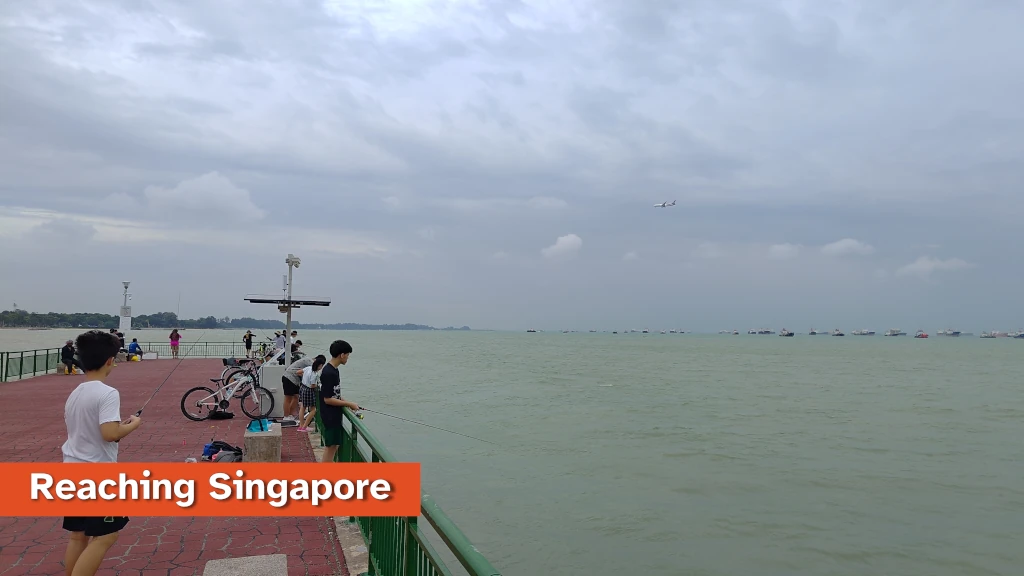
Avoid peak times for the best experience of East Coast Park. Peak hours are all day Sunday. If you can go any other time I would highly recommend doing that instead.
To get to East Coast Park, try one of the following:
- Bus: Route 36, alight at Parkway Parade or Seaside Residences then use the respective underpasses to get to the park. Route 196 also serves Parkway Parade stop.
- Taxi: Good for getting to East Coast Lagoon food centre in particular - make sure you tell the driver you want to go to the food centre, otherwise you’ll likely be dropped off on the wrong side of the lagoon.
- MRT: The Thomson East Coast Line will open stations near East Coast Park in 2024, these include: Katong Park, Parkway Parade, Siglap, and Bayshore.
- From Changi Airport: Bicycle hire is available at Terminal 2, form there is’ about a 20 minute ride to the park; cycling paths are available.
Changi Airport currently has a promotion where bicycle hire is free for passengers transiting through the airport. For more information check out their website here.
Costs involved with visiting East Coast Park (based on my typical spend when bringing visitors here):
- Park entrance: FREE
- Dinner at East Coast Lagoon Food Village: S$15-S$30 per person, ordering seafood leads to the higher bill
- Bike hire: S$10-S$15/hour, expect to hire for at least 2 hours
2. Bird Paradise
The Bird Paradise is the newly built home to over 3,500 birds across 400 different species located in the Mandai Wildlife area in the north of Singapore. It relocated recently and this new location offers a huge improvement with large netting allowing the birds to fly around freely in areas that you can walk through.
I love bringing visitors to the Bird Paradise. There are so many unique and tropical birds here that it’s an experience I’ve struggled to find in any other country - while many other cities have zoos, only Singapore has a wildlife experience as unique as the Bird Paradise.
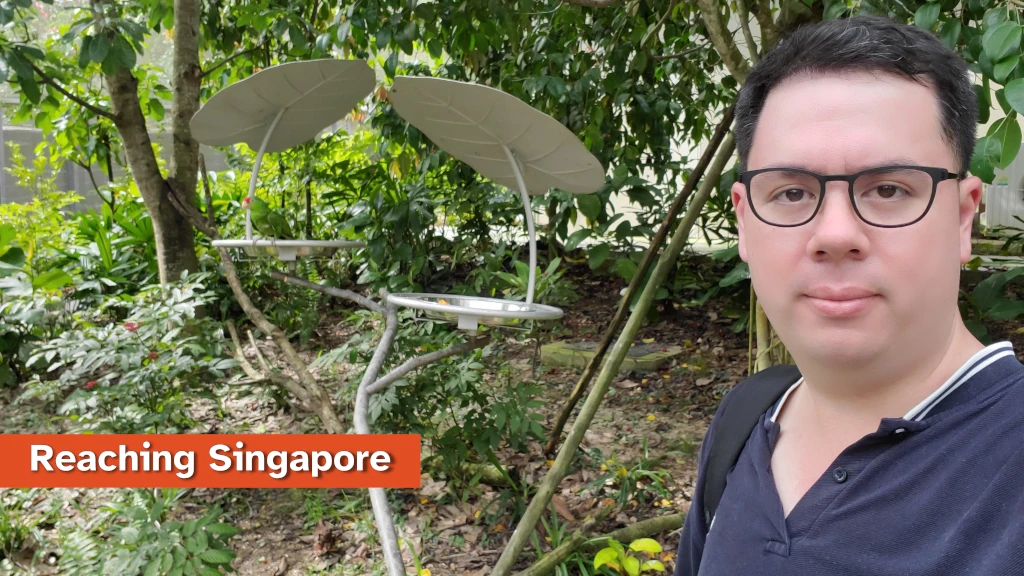
There are various themed zones capturing different parts of the world to make the birds feel at home:
- African forest - for birds who feel more at home in continental Africa
- Crimson wetlands - recreated waterfalls, streams, and lakes for birds who prefer it a little wet (I saw a huge flock of flamingos last time I was here)
- Australian outback - bringing to Singapore over 30 species of bird who usually call Australia home
Cost of visiting the Bird Paradise is S$48 for an adult and S$33 for a child. Package deals are available if visiting th eother wildlife attractions.
I recommend spending at least 2 hours in the Bird Paradise. The park opens at 9am and closes at 6pm.
Morning is the best time to visit I feel as the weather is a little cooler and the birds a little more active. The walk through the rooms is quite logical, and there is a shuttle tram service connecting one end of the park to the other (i.e. you can walk one way through the park and catch the tram the other way - I like starting at the end and walking back, but beware that this is slightly up-hill).
Eating is best done outside the Bird Paradise - there is a long stretch of eateries catering to various tastes as you approach the Bird Paradise entrance. There are a couple of cafes inside (I’m told the penguin cafe lunch buffet is good, but never tried it myself), and the staff told me I could go out to eat and come back in.
To get to the bird paradise:
- Taxi - my preferred way - costs roughly S$20-S$30 depending on time of day and which area you’re coming from
- MRT (Khatib station) and shuttle bus - costs around $1.50 for the MRT and S$2 for the shuttle bus
- Public bus (route 138 from Ang Mo Kio MRT or Springleaf MRT) - costs around S$1.50
To leave the bird paradise - I highly recommend taking the shuttle bus to Khatib, or the public bus. Do not rely on taxis to get out as you might be waiting a while (and they add on a Mandai surcharge); for more detail about taxis, check out my complete guide here.
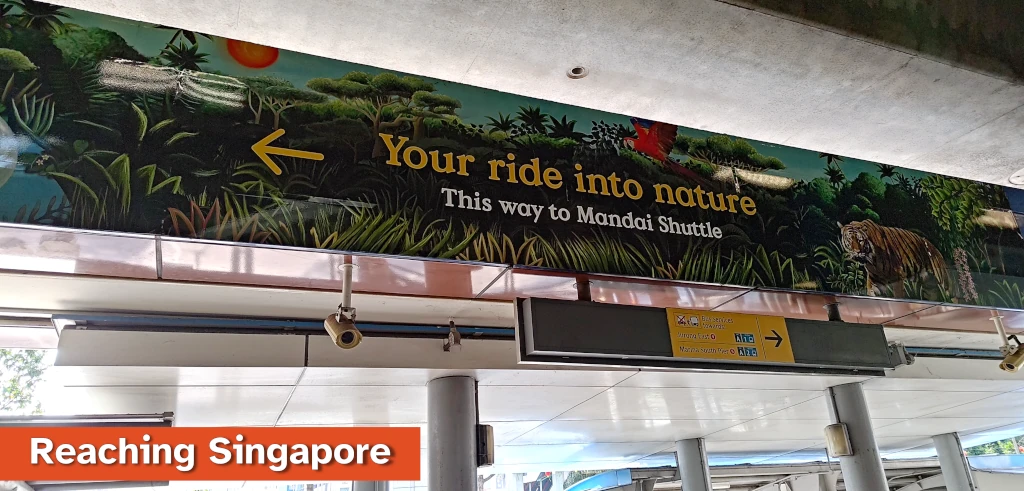
The Bird Paradise is one of my favourite unique attractions to Singapore, if you’re looking for more unique-to-Singapore things to do, I wrote a whole guide on that recently. Check it out here: reachingsingapore.com/unique-to-singapore
3. Botanic Gardens
Singapore’s UNESCO world heritage listed Botanic Gardens are an incredible site to see. The Botanic Gardens are over 160 years old boasting a rich diversity of plant life spanning across the 82 hectare space. Currently it’s home to over 10,000 species of plant.
I love taking people to the Botanic Gardens because of the immediate contract you feel transitioning from urban jungle to lush greenery in only a few steps. Within minutes on the MRT you can be whisked from downtown offices right to the gardens, I feel it really shows off how much of a garden city Singapore is.
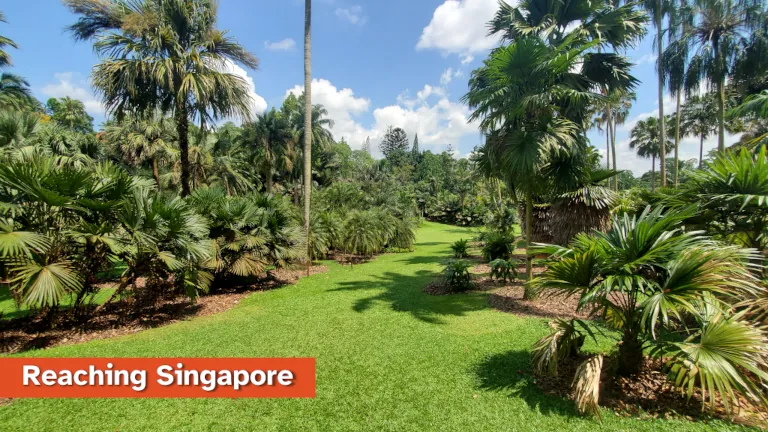
The National Orchid Garden is a highlight I like to show off. It’s home to the world’s largest orchid display with over 1,000 species of orchid. Singapore takes orchids as a point of national pride, often using them in diplomacy with foreign dignitaries.
I also like bringing visitors to the themed spaces, including the:
- Healing garden, which focuses on plants that have been used in medicine
- Fragrant garden, showcasing plants with unique scents (come at sunset and into the evening for the best scents)
- Ginger garden, cultivating hundreds of species of ginger and related plants
The themed spaces along with most of the gardens are free to visit. The Orchid Garden has an entrance fee of S$15 for adults and free for children below 12.
Catching the MRT is the easiest way to get to the Botanic Gardens. It is connected to Botanic Gardens MRT station (on the yellow Circle Line) and Napier MRT station (on the brown Thomson East Coast Line). My personal preference is to start at Napier MRT and walk up through the gardens to Botanic Gardens MRT; this is a slightly up-hill route though and you may prefer the alternative direction.
If you get hungry while exploring the Gardens, check out the Adam Food Centre located near the Botanic Gardens MRT station - home to some authentic Singaporean hawker food. There are also a few cafes located within the Gardens.
4. Fort Canning Park
Fort Canning Park is a historical landmark nestled in the centre of Singapore with settlement here dating back to the 14th century. It was used as a command centre and barracks during colonial times, but is now home to historic relics and a green oasis in the middle of the busy city.
I like bringing people here to explore the relics of the historic fortifications and get a feel that despite how new and modern Singapore is, its history goes back hundreds of years. The park is also home to this famous Instagram spot that we often have to queue for to get a good photo.
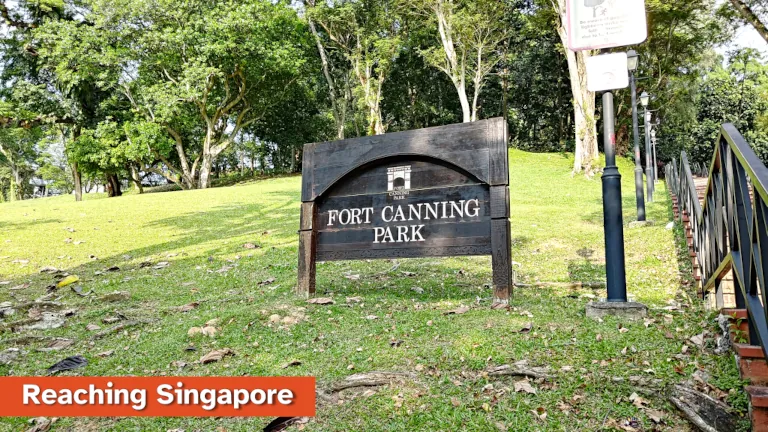
I often recommend Fort Canning Park to visitors who are here on work trips - it is a convenient place to escape the dense urban jungle of Singapore without having to travel too far from major hotel and office areas.
Fort Canning Park is free to visit, including the famous Instagram spot, the fortification relics, and the Battlebox (a museum about British command headquarters during the second world war).
The easiest way to get to Fort Canning Park is by taking the MRT to Dhoby Ghaut or Fort Canning MRT stations. There are also countless buses that pass by on Penang Rd and Orchard Rd.
5. Gardens by the Bay
Gardens by the Bay is the 100-hectare expanse of manicured green and garden space stretching out from Marina Bay Sands. It is home to the famous Supertree Grove, Cloud Forest, and Flower Dome.
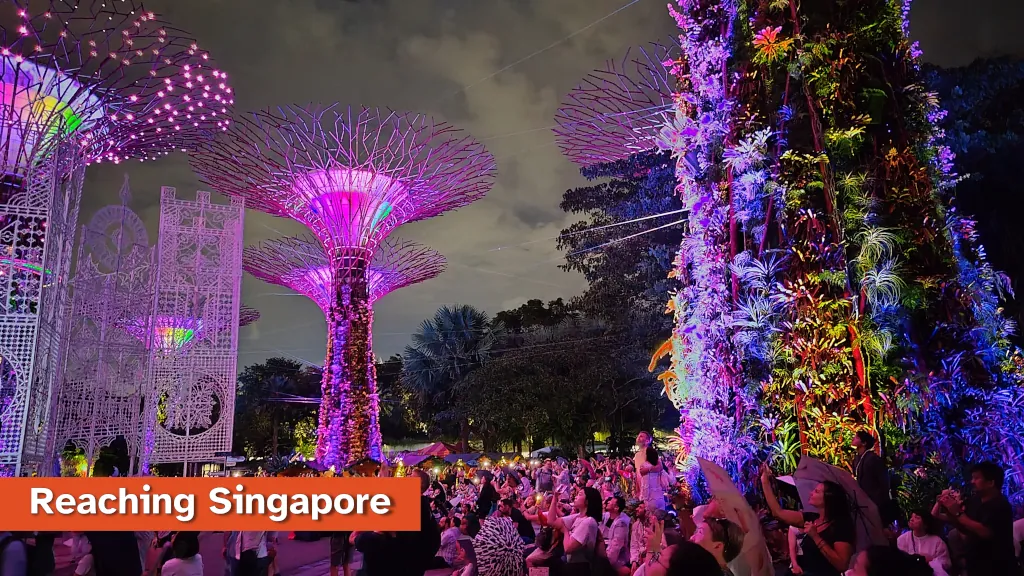
My personal highlight here is the light show at night. Every night the Supertrees are lit up in sync with the music. The display changes every few months meaning that you can be a repeat visitor here without getting bored.
I also like bringing visitors to the Flower Dome and Cloud Forest. These offer climate controlled environments suitable for encouraging flowers and plants from various regions around the globe.
Costs involved with Gardens by the Bay include:
| Attraction | Price |
|---|---|
| Super Tree Grove | Free |
| Super Tree light show | Free |
| Flower Dome | S$20 for adults, S$12 for children |
| Flower Dome + Cloud Forest | S$32 for adults, S$18 for children |
Combination tickets, including access to the Supertree Observatory are available and can offer discounts if you plan to see multiple attractions.
The easiest way to get to Gardens by the Bay is by MRT. It is located a short walk from either Bayfront (yellow Circle Line) or Gardens by the Bay MRT stations. Taxis are also available to and from the gardens.
6. Singapore Zoo
Singapore Zoo is renowned for its ‘open concept’ design, which offers an immersive experience where animals live in spacious, landscaped enclosures mimicking their natural habitats. The zoo is home to nearly 3,000 animals across 300 species, ranging from mammals and birds to reptiles and fish.
There are also themed exhibits within the zoo, such as:
- Fragile Forest - a biodome that replicates a tropical rainforest
- Wild Africa - lions and other animals who traditionally call the African plains home
- KidzWorld - giving kids the opportunity for up-close animal interactions and interactive play
Tickets to the zoo cost S$48 for adults and S$33 for children. There are multi-park deals available if you plan to go to the Bird Paradise, Night Safari, or River Wonders as well.
The Zoo is located in the Mandai Wildlife area, a short distance down the road from the Bird Paradise. My advice on getting to/from the zoo is the same: Get in by taxi or bus, but leave by taking the bus to one of the nearby MRT stations.
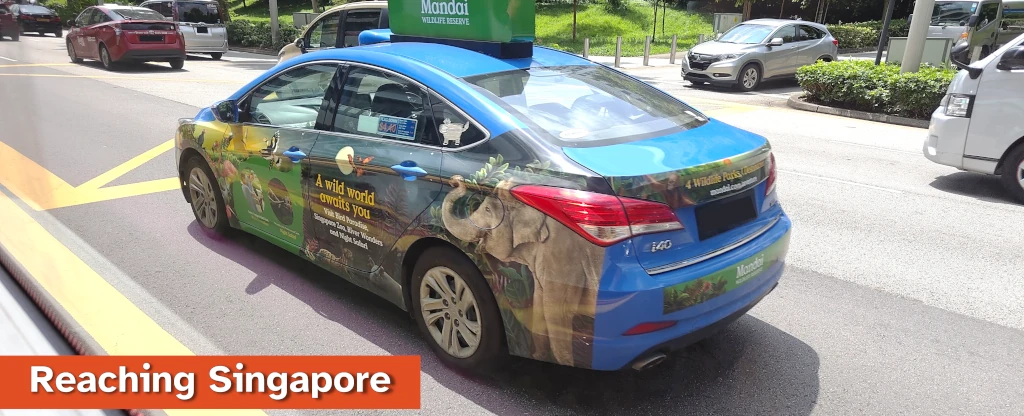
I usually recommend allocating at least 2 hours to wander around the zoo (though it’s easy to spend more than that, especially if you have kids). There are places to eat inside and outside the zoo.
7. Pulau Ubin
Visiting the off-shore island of Pulau Ubin is an adventure.
Pulau Ubin is a small island north-east of the main island of Singapore. I like bringing visitors here for the scenery, wildlife, and to have a real escape from the busy city of Singapore. We usually rent bikes and ride or hike our way across the island.
Check out the Chek Jawa Wetlands, a unique intertidal area home to a rich variety of marine wildlife, mangroves and coast forests. There are boardwalks that stretch out into the bay allowing you to get a full view of the wetlands. I also saw a snake here once climbing the handrail of the observation tower, so do be careful of the native wildlife.
My personal favourite place to explore is the old quarry. Climbing the paths around it gives you views that make you think you’re out in the middle of nowhere (rather than a couple of kilometers from the dense urban city of Singapore).
To get to Pulau Ubin:
- Take a bus or taxi to Changi Point Ferry Terminal
- Get onboard a boat to Pulau Ubin (costs S$3)
- Ride out to Pulau Ubin (rougly 10 minutes)
I recommend spending most fo the day here if you want to explore the whole island. Or at least half a day if you’re only going to the wetlands or the quarry. I always feel the best place to eat in the area is actually at the Changi Village hawker centre, located near the ferry terminal.
8. Night Safari
The Night Safari is the world’s first nocturnal zoo, pioneering the concept of night-time animal encounters in a natural environment. It is home to over 2,500 animals across 130 species and offers a unique opportunity to observe the intriguing behaviours of nocturnal animals in their own habitats.
Visitors are free to roam around the park, or to ride a guided tram that winds through the different geographical zones with a voice-over introducing the animals. However I feel the self-guided walks are the better way to approach the animals; the tram can be a bit bright at times.
I like recommending the Night Safari to visitors because it is unique. In general I recommend visitors explore Singapore at night when it’s cooler, and the Night Safari is a great way to do that.
A ticket for the Night Safari costs S$55 for an adult and S$38 for children. As with the other Mandai Wildlife attractions, discounts are available if you’re planning to visit multiple parks.
Transport is the same as the other wildlife attractions: Take a taxi or bus in, and take the shuttle bus or public bus to get out. I highly recommend you do NOT rely on a taxi to get home from the Night Safari, they are in high demand at night and you will be waiting a long time.
9. River Wonders
Another unique experience started in Singapore, River Wonders is a river-themed wildlife park centred on wildlife that call river ecosystems home.
River Wonders features over 7,000 animals who live on land and water, providing visitors a glimpse into the diverse wildlife found along river habitats.
It is divided into zones modelled after iconic rivers, including:
- Congo river - bright and colourful fish
- Mekong river - built around the ecosystem that supports the food-bowl of south-east Asia
- Nile river - meandering through 10 African countries, an ecosystem which many desert areas rely on
River Wonders costs S$42 for adults and S$30 for children. Discounts are available if you’re planning to visit multiple parks.
Similarly to the other wildlife attractions, my advice for transport is the same: Take a taxi or bus in, and take the shuttel bus or public bus to get out.
10. Mount Faber, Henderson Waves, and the Southern Ridges
If you flew to Singapore on Singapore Airlines, you’ve seen Henderson Waves. It features in the Singapore Airlines safety video, and is adjoined on either side by the Southern Ridges and Mount Faber.
I like bringing visitors here for a short nature hike that’s close to the city. I usually start with the climb up Mount Faber, then across Henderson Waves, and descend through the Southern Ridges. All of this is free, and offers some great scenic views looking out over the west of Singapore.
Eating at Seah Im Food Centre is the main reason I do it in this order - I like showing off the breakfast options here first before climbing the mountain.
Mount Faber is also home to the cable car to Sentosa. The cable car costs S$35 for adults and S$25 for children. Discounts are available for buying online in advance.
11. Bukit Timah Nature Reserve
Bukit Timah is home to one of the few remaining areas of primary rain forest in Singapore. The nature reserve is named after (and includes) the tallest point in Singapore – Bukit Timah, standing at approximately 165 metres above sea level.
I bring people here for the hiking. You can hike amongst the greenery and completely lose yourself forgetting that you are a very short distance from a very busy city. There are also some lovely scenic views of water catchments and rainforest.
It is free to visit and explore Bukit Timah Nature Reserve. However it is only open between 7am and 7pm (unfortunately no night hiking at this location). Like most outdoor nature locations in Singapore, I recommend visiting in the morning when it’s a bit cooler. If visiting in the afternoon, make sure you wear a hat and bring lots of water.
The easiest way to get there is by MRT: Take the blue Downtown Line to Beauty World or Hillview stations. There are also a handful of bus routes that travel along Bukit Timah Rd which serve the nature reserve.
12. MacRitchie Reservoir
MacRitchie is Singapore’s largest reservoir surrounded by extensive green space popular with joggers and nature lovers. It’s an easier walk than Bukit Timah but also offers you the chance to get up-close with Singapore’s natural jungle.
I like recommending MacRitchie for the TreeTop Walk (a suspension bridge crossing that offers a bird’s eye view of the forest canopy) and the Walking Trail (11km trail that circumnavigates the reservoir).
Visiting MacRitchie is free of charge, there is no need to buy a ticket to explore the reservoir area. The trail is open 24 hours a day.
13. Peirce Reservoir
Yes it’s spelt Peirce (I used to make this mistake a lot when I started visiting the area). There are two parts to Peirce Reservoir: An upper park and a lower park. The Lower Peirce Reservoir has a boardwalk that you can use to explore the jungle, while the Upper Peirce Reservoir has a trail that runs close to the water.
If you’ve hiked the other trails on this list, Peirce Reservoir offers a few more that you can explore.
There is no fee to explore the Peirce Reservoir trails, though they only open from 6am to 7:30pm. I feel this is a nicer one to explore in the evening as it’s open slightly later than the other trails.
14. Rail Corridor
There used to be a train service from downtown Singapore all the way into Malaysia. It was discontinued some years ago and turned into a green corridor.
The Rail Corridor is 24km long stretching from Tanjong Pagar Railway Station (the old terminus) to Kranji MRT station (nearer the border with Malaysia).
There is a lot of heritage to explore along the Rail Corridor. Including 2 historic truss bridges, and the old Bukit Timah railway station. The buildings are still intact and can be explored from the exterior.
It is free to visit and explore the Rail Corridor. While it is technically open 24 hours a day, much of the corridor is not lit. NParks recommends you do not use the trail at night.
Further reading
I often recommend visitors travel around Singapore by bus or MRT. If you need more help figuring these out, I wrote entire dedicated guides on how to use and how much it costs to get around by bus and MRT
Each of the nature areas in this guide also has its own website if you want to learn more about the area. Check them out here:

